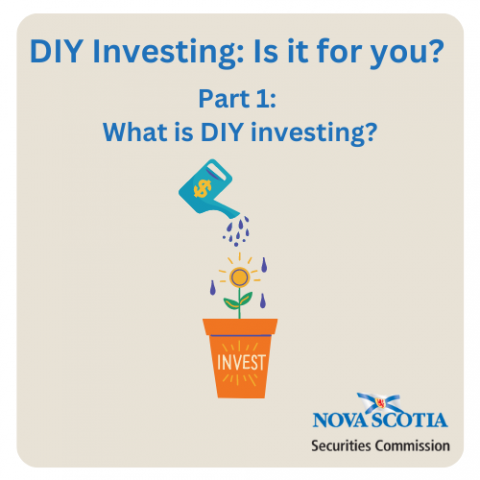Submitted by nsscadmin on

Do-it yourself, or DIY investing has exploded in popularity in recent years. In 2021 when a lot of the country was stuck at home because of the pandemic, 3.6 million Canadians opened DIY investing accounts. The Nova Scotia Securities Commission does not provide advice and subsequently we do not provide a recommendation for or against DIY investing.
However, due to so many Canadians recently taking the plunge into DIY investing, and many others wondering if it is right for them, the Commission is providing basic DIY investing information to help investors decide if DIY investing is right for them and to help them make informed investing decisions.
This six-part blog series begins today with a look at what exactly DIY investing is. It will continue for the next six weeks with:
August 9 – DIY Investing: Is it for you Part 2 – Advantages and disadvantages of DIY investing
August 16 – DIY Investing: Is it for you Part 3 – How to get started with DIY investing
August 23 – DIY Investing: Is it for you Part 4 – Fundamentals of stock picking
August 30 – DIY Investing: Is it for you Part 5 – Common mistakes DIY investors make
September 7 - DIY Investing: Is it for you Part 6 – Cognitive biases found in DIY investing
So, what is DIY investing? Simply put, DIY investing, or self-directed investing as it is also commonly known, is a type of investing where an individual investor chooses and manages all the securities in their investment portfolio. The investor is in full control over what is bought, held, and sold from their portfolio. DIY investing is best suited for an investor who understands the fundamentals of investing and wants to be hands-on with their investing choices.
Some investors believe that DIY investing is simply day trading. This is often not the case. All day traders are DIY investors, but not all DIY investors are day traders. We talked about day trading in a previous blog post, but more simply put, day trading is a specific form of DIY investing where the investor focuses on high-risk short-term buying and selling of securities to try and make a quick profit. This type of DIY investing can be very high risk and is not recommended for novice investors.
Next week we’ll continue our look at DIY investing and whether it is right for you by looking at some of the advantages and disadvantage of DIY investing.
